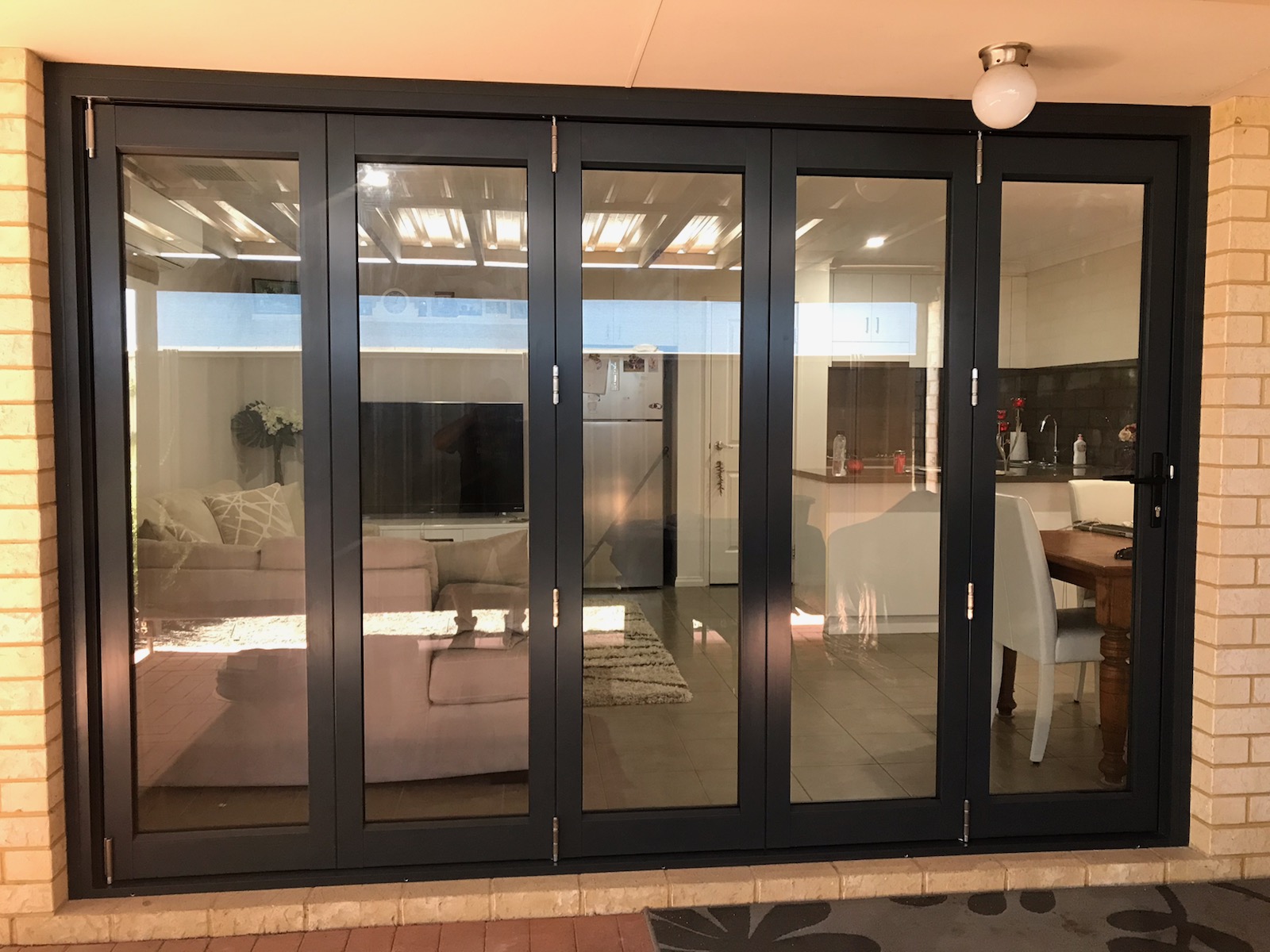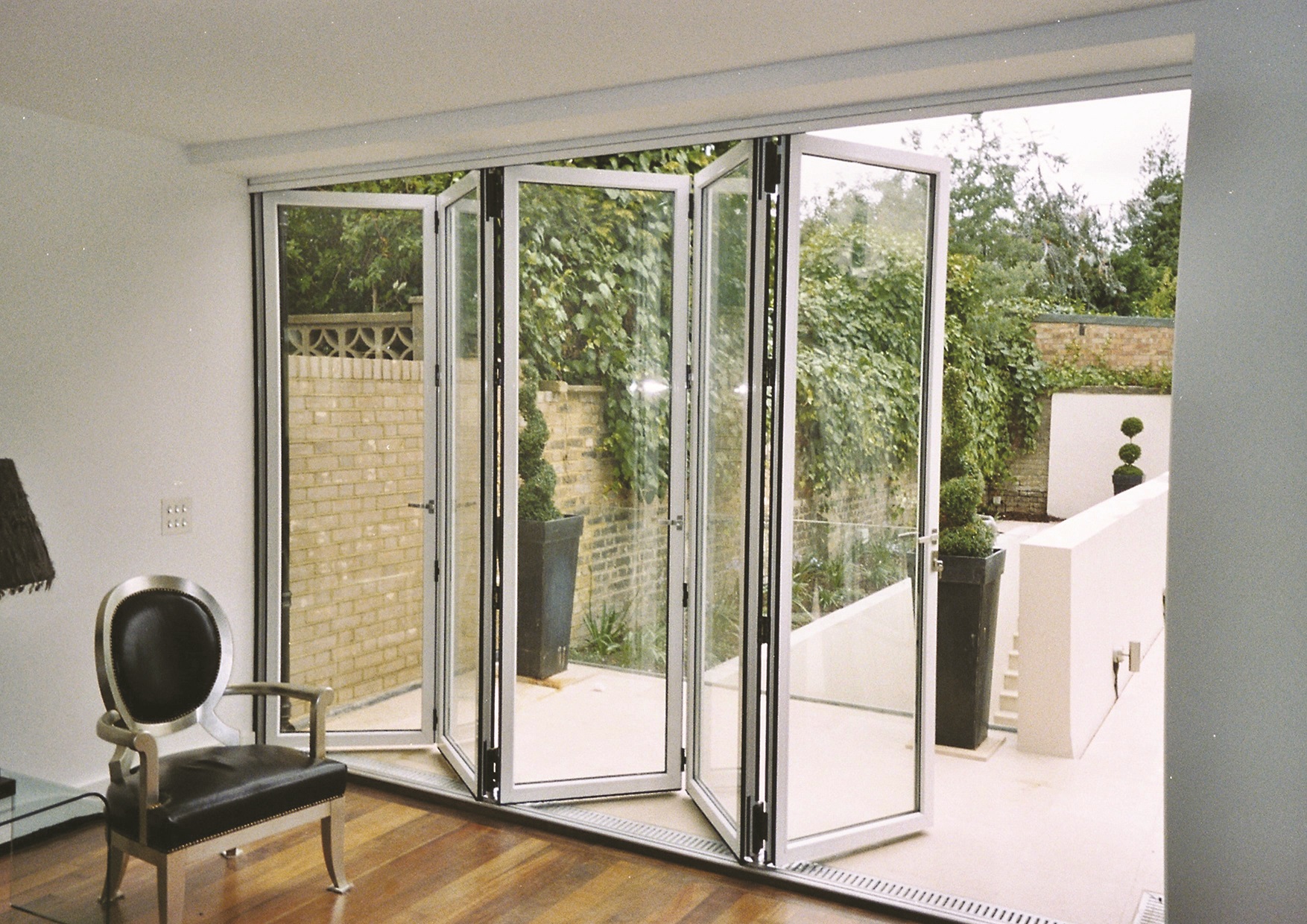Types and Styles of Sliding Folding Cabinet Doors

Sliding folding cabinet doors offer a space-saving and aesthetically pleasing alternative to traditional hinged doors. Their versatility allows for customization to suit various interior design styles and functional needs. This section will explore the diverse materials, mechanisms, and design styles available for these doors.
Materials Used in Sliding Folding Cabinet Doors
The choice of material significantly impacts both the durability and aesthetic appeal of sliding folding cabinet doors. Different materials offer unique properties, influencing their suitability for specific environments and design preferences.
| Material | Durability | Aesthetic Appeal | Suitable Styles |
|---|---|---|---|
| Wood | High, dependent on wood type and finish. Solid wood offers superior durability compared to veneer. | Classic, warm, can be customized with various stains and finishes. | Traditional, rustic, transitional |
| Glass | Moderate to high, depending on the type of glass (tempered glass is more durable). Susceptible to breakage. | Modern, sleek, allows light transmission. | Modern, contemporary, minimalist |
| Metal | High, resistant to scratches and damage. Can be susceptible to dents depending on the metal type and gauge. | Industrial, modern, sleek. Can be finished in various colors. | Modern, industrial, contemporary |
| Melamine | Moderate. Resistant to scratches and moisture, but prone to chipping on edges. | Versatile, available in a wide range of colors and finishes. | Modern, contemporary, traditional |
Sliding Folding Door Mechanisms
Several mechanisms govern the operation of sliding folding doors, each with its advantages and disadvantages. The choice of mechanism often depends on the weight of the doors, the desired ease of operation, and the overall design aesthetic.
Sliding folding cabinet doors – One common mechanism utilizes a track system, where the doors slide along a track mounted at the top and/or bottom. This system is relatively simple and cost-effective, but can be prone to derailing if not properly installed and maintained. Heavier doors may require a more robust track system to ensure smooth operation. Another mechanism incorporates a bypass system where panels slide past each other, maximizing space utilization. However, this system often requires more precision in installation and can be more expensive than simpler track systems. Finally, some systems use a combination of tracks and folding mechanisms, offering flexibility in space optimization.
Sliding Folding Cabinet Door Design Styles
The design of sliding folding doors can be adapted to complement various interior design styles. Below are three examples showcasing diverse material choices and hardware to achieve different aesthetics.
Modern Style: This design features sleek, frameless glass panels sliding on a minimalist, top-mounted track. The hardware is discreet and integrated, emphasizing clean lines and a contemporary feel. The glass panels allow natural light to penetrate the space, creating an airy and open atmosphere. Brushed nickel or black hardware would complement the overall aesthetic.
Traditional Style: This design utilizes solid wood panels, possibly with raised panel detailing, in a rich dark stain. A sturdy bottom-mounted track ensures smooth operation. The hardware is visible, incorporating ornate brass or bronze pulls and hinges that add to the classic appeal. The wood grain and rich finish create a sense of warmth and sophistication.
Minimalist Style: This design emphasizes simplicity and functionality. The doors are made of smooth, painted MDF panels in a neutral color such as white or light gray. A hidden track system ensures a seamless and uncluttered look. The hardware is minimal and discreet, possibly integrated into the door panels themselves. This design prioritizes clean lines and a sense of understated elegance.
Installation and Maintenance of Sliding Folding Cabinet Doors

Proper installation and regular maintenance are crucial for ensuring the longevity and smooth operation of sliding folding cabinet doors. Neglecting these aspects can lead to premature wear, malfunctions, and ultimately, the need for costly repairs or replacements. This section details the process of installing these doors and provides guidance on maintaining their optimal performance.
Sliding Folding Cabinet Door Installation
Successful installation requires careful planning and execution. Improper installation can lead to binding, misalignment, and even damage to the doors or the cabinet itself. The following steps Artikel a typical installation process.
- Preparation: Begin by carefully measuring the cabinet opening to determine the exact dimensions required for the door system. Ensure the cabinet framing is level and sturdy enough to support the weight of the doors. Gather all necessary tools and materials, including a level, measuring tape, drill, screws, appropriate hardware (track, rollers, handles), and potentially a helper for larger doors.
- Track Installation: Securely attach the top track to the cabinet frame, ensuring it’s perfectly level and aligned. Use appropriate screws and pilot holes to prevent splitting the wood. For heavier doors, consider using stronger screws and potentially reinforcing the frame.
- Roller Installation: Attach the rollers to the top of each door panel, ensuring they are correctly aligned and securely fastened. The rollers should move smoothly and freely within the track.
- Door Panel Installation: Carefully lift and slide each door panel into the track, ensuring they are properly aligned and evenly spaced. Adjust the rollers if necessary to ensure smooth operation.
- Bottom Guide Installation (if applicable): Install the bottom guide to keep the doors aligned and prevent them from swaying. This is usually a small track or a series of rollers at the bottom of the cabinet opening.
- Handle Installation: Attach the handles or pulls to the doors, ensuring they are securely fastened and positioned for convenient use.
- Final Adjustments: After installation, carefully check the operation of the doors. Adjust the rollers or tracks as needed to ensure smooth, effortless sliding and folding.
Visual Representation of Installation
Imagine a rectangular cabinet opening. At the top, a horizontal track is firmly affixed to the cabinet frame. Each door panel has rollers attached to its top edge, which engage with this track. As the doors slide, the rollers move smoothly along the track. At the bottom, a less prominent guide (possibly a small track or individual rollers) prevents the doors from swinging or tilting. The handles are positioned for easy access, allowing the user to smoothly slide and fold the doors.
Maintenance and Troubleshooting of Sliding Folding Cabinet Doors
Regular maintenance is key to extending the life of sliding folding cabinet doors and preventing common issues.
- Cleaning: Regularly wipe down the doors and tracks with a soft cloth and mild detergent to remove dust and debris. Avoid harsh chemicals that could damage the finish.
- Lubrication: Periodically lubricate the rollers and tracks with a silicone-based lubricant. This helps to reduce friction and ensure smooth operation. Apply a small amount of lubricant to the rollers and gently move the doors back and forth to distribute it evenly.
- Addressing Binding or Sticking: If the doors bind or stick, check for debris in the tracks and clean them thoroughly. Lubricate the rollers and tracks. If the problem persists, check for misalignment and adjust the rollers or tracks as needed.
- Loose or Damaged Rollers: If the rollers become loose or damaged, they should be replaced. This usually involves removing the old rollers and attaching new ones using the appropriate hardware.
- Track Alignment Issues: If the doors are misaligned, check the level of the track and ensure it is securely fastened to the cabinet frame. Adjust the track or the rollers as needed to correct the alignment.
Applications and Design Considerations for Sliding Folding Cabinet Doors

Sliding folding cabinet doors offer a unique blend of functionality and aesthetics, making them a versatile choice for various applications. Their space-saving design and customizable styles allow for seamless integration into diverse interior design schemes, but careful consideration of their suitability for specific settings is crucial for optimal performance and visual appeal.
Sliding Folding Doors in Kitchens
Kitchens often demand efficient use of space, and sliding folding doors can be a valuable asset. They are particularly well-suited for pantry cabinets, maximizing storage access without encroaching on valuable floor space. The ability to fold the doors neatly to the side allows for easy access to even deep cabinets. However, the mechanism may require more cleaning than traditional hinged doors, as dust and crumbs can accumulate in the tracks. Furthermore, the weight of heavy kitchenware within the cabinets might necessitate robust tracks and hardware to ensure smooth and reliable operation.
Sliding Folding Doors in Bathrooms
In bathrooms, where space is often at a premium, sliding folding doors can be an elegant solution for linen closets or medicine cabinets. Their compact design minimizes the swing space required by conventional doors, leaving more room for movement. The smooth, often sealed surface of the doors is also easier to clean and maintain compared to more ornate styles, making them a practical choice for a hygienic environment. However, the potential for moisture buildup within the tracks should be considered, requiring regular cleaning and maintenance to prevent mold or mildew. Furthermore, the door material should be selected for its moisture resistance.
Sliding Folding Doors in Closets
Closets are ideal locations for sliding folding doors, especially in smaller bedrooms or walk-in closets with limited space. The doors maximize storage accessibility, and their ability to fold away allows for easy access to items even when the closet is full. A wide variety of materials and finishes are available to complement different closet styles, from sleek modern designs to more traditional aesthetics. However, the complexity of the track system might be a drawback in closets with uneven floors or walls, necessitating careful installation and potential adjustments.
Design Considerations for Sliding Folding Cabinet Doors
The successful integration of sliding folding cabinet doors hinges on careful consideration of both functional and aesthetic aspects. The choice of materials, hardware, and overall design should complement the existing interior design scheme.
Space optimization is paramount. Consider the available space, both within the cabinet and the surrounding area, to ensure the doors operate smoothly without obstructing other features. Accurate measurements and planning are crucial before installation.
Aesthetic integration is key. The doors should visually complement the surrounding cabinetry and the overall style of the room. Choose materials and finishes that harmonize with existing elements to create a cohesive and aesthetically pleasing design.
Durability and functionality are essential. Select high-quality materials and hardware that can withstand regular use and maintain their smooth operation over time. Proper installation is crucial to ensure the longevity and efficiency of the sliding folding doors.
Material Selection for Sliding Folding Cabinet Doors
The material selected significantly impacts both the aesthetic and functional aspects of the doors. Options range from lightweight yet durable materials like aluminum or melamine, offering a modern, clean look, to more traditional choices such as wood veneer or solid wood for a classic feel. Consider the weight of the material in relation to the strength of the chosen track system. For example, heavy solid wood doors will require a more robust track system than lighter materials. The choice of finish, whether paint, stain, or laminate, also plays a significant role in the overall design.
